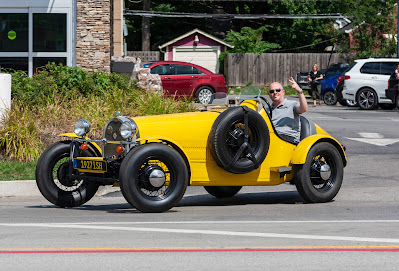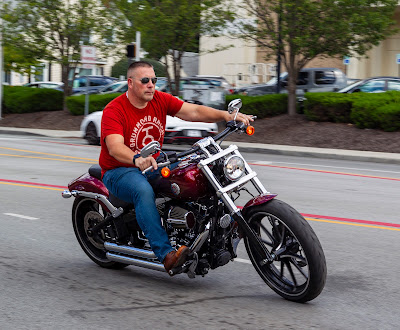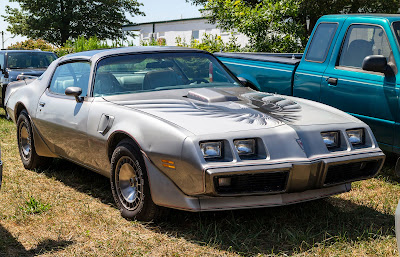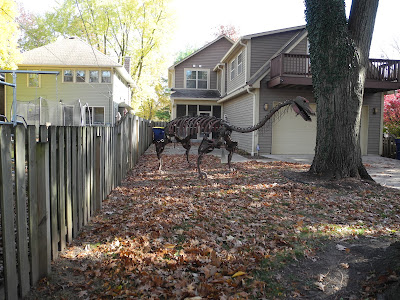 |
| Indiana State Fair attendee with a Canon EOS 80D & Tamron 18-400mm zoom lens. |
Something I noticed at the State Fair this past summer was that there were a lot more people carrying actual cameras... you know, the kind you hang on a strap around your neck ...than there have been for the last several years. I probably haven't seen this many serious cameras being used in the entire time I've been attending the Fair.
A shutterbug friend attending a Highland Games event out east last month also noticed an unusual number of cameras, real cameras of the interchangeable lens variety, relative to what he'd been used to of late.
Heck, on the random street corner I picked to stake out the Monumental Marathon here in Indy the other day, among the people waving cell phones, was a young shooter with a Canon Rebel T7 and kit lens.
That got me to wondering why this is, and here’s my theory:
Up through the end of the film era most people had some sort of camera, but unless they had photography as a hobby, it was generally only used to document special occasions: holidays, parties, holiday parties, vacations, sports games or concerts...that sort of thing.
This was because of two things. The first was that each photograph had real physical monetary and time costs, in film and processing and printing. The second was that in order to share those images with anyone, you had to be in the same place with them and get them to look at your physical photo.
 |
| The flash-burned photo of me leaning on the trunk of my '75 Ford Granada sedan* was taken with a Kodak S1100XL just like the one in the photo, back in '91. |
That changed with three innovations that became increasingly common toward the end of the Nineties: Digital cameras, the World Wide Web, and broadband connectivity that could transmit images to your screen at something other than a snail's pace. (One of the first web fora on which I was a moderator would close and lock threads once they went over 100 kilobytes in size so that they wouldn't load too slowly for people on dialup connections.)
With the ability to share photos over the internet, the reasons to purchase a digital camera began to multiply. I remember on my first AOL home page what a pain it was to take physical photos and then get my then-roommate to scan them so they could be put online.
The new horizons of eBay and Craigslist gave normal folks who'd never consider photography as a hobby or pastime a reason to buy a digital camera. How are you gonna sell that sofa or old Honda unless you can upload some photos of it?
In fact, the need to sell my old '84 Trans Am was the impetus for the purchase of my own first digicam, a New-Old-Stock
Sony Mavica FD-88 in October of 2001. The fact that I could use it to take pictures of S&W revolvers and upload them to internet forums was just a bonus. Ironically, I picked the Mavica not only because it was on sale, but also because it stored photos on floppies. Back then, there was no standard storage medium for cameras: Memory Sticks, SD and CF cards, SmartMedia, xD cards... they were all vying to be The One. I picked the Mavica because computers would
always have floppy drives, right? Ell. Oh. Ell.
 |
| You never forget your first digicam or your first cellie, I guess... |
Over the next few years I upgraded digital cameras twice, first to a Nikon Coolpix 990 in 2003, and then a Kodak EasyShare V1073 in 2008. I was still using the Kodak when I got my first smart phone in 2011, an LG Optimus V, whose 3MP camera was no threat to the supremacy of the EasyShare with its 10MP sensor and sharp Schneider-Kreuznach 3X optical zoom lens.
My next phone with a camera was a Samsung Galaxy SII and, to be perfectly honest, if I hadn't gotten back into photography as a hobby, that's where I would have stopped buying cameras. The Galaxy's camera had an 8MP sensor and turned out perfectly adequate snapshots.
Here's the thing, though: That generation of smart phones... the Galaxy SII and the iPhone 5 ...put perfectly adequate snapshot cameras into the hands of millions of people, some percentage of whom eventually wanted more. Being on Instagram or Flickr can expose a person to some pretty cool imagery of the kind that can't exactly be duplicated with a fixed 24mm lens and a 1/2.3" sensor.
 |
| Dozen-year-old cameras are still useful, unlike dozen-year-old smart phones. |
Just like back in the film days, some people got their start with a Brownie or an Instamatic and decided that they liked taking pictures and wanted to be able to do more, a certain percentage of folks are using the modern-day equivalent of those ubiquitous snapshot cameras...and deciding that they want more.
Will digicam sales ever return to what they were? No, but only if you count the standalone inexpensive general purpose digicams. People don't need those anymore, because there's already one strapped to their phone.
But cameras for the specialized activity of photography are still with us, and maybe having a bit of a revival. After all, it's never been easier to share your photos than it is right now.
What about you? Have you noticed an uptick in actual cameras where you are?
.
*EDIT: My bad, my memory had failed me. The brown ’75 Granada was a coupe, not a sedan. It may have been a depressing six-cylinder crapbbox bought for two hundo as basic transportation at what was maybe the low ebb of my life to date, but I still had
standards, dammit.



















































